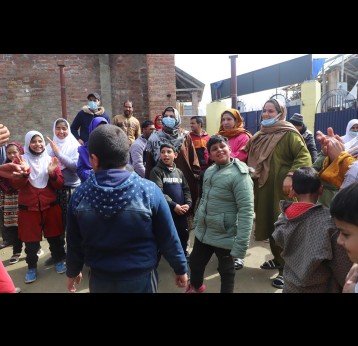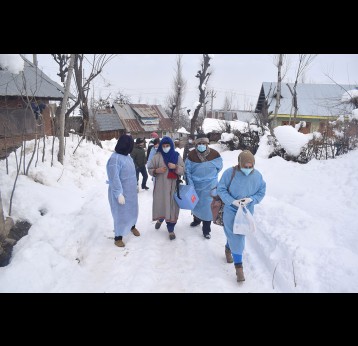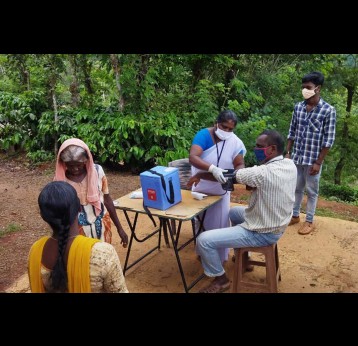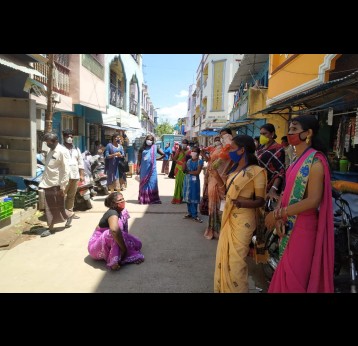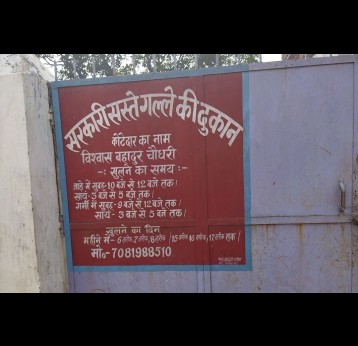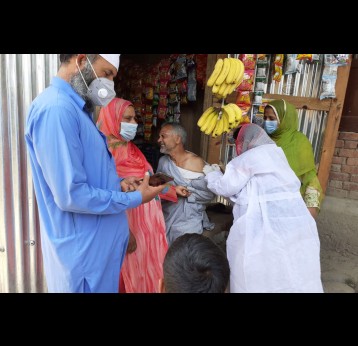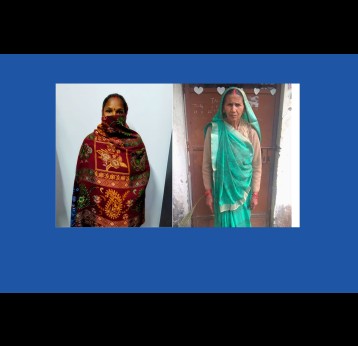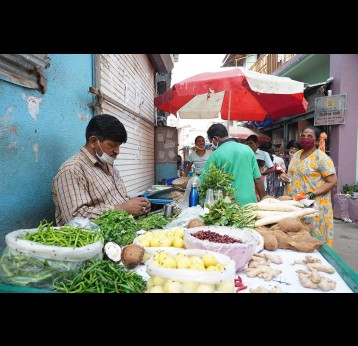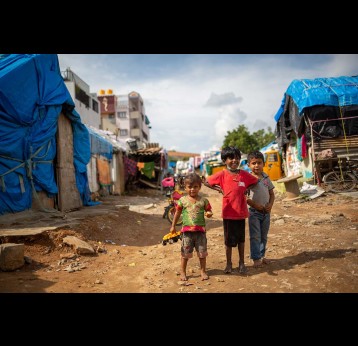Country Information
DTP3 / immunisation coverage
Grade of ConfidenceCommitments: Multi-year programme budgets endorsed in principle by the Gavi Board. These become financial commitments upon approval each year for the following calendar year.
Approvals: Total Approved for funding
Disclaimer: the boundaries and names shown and the designations used on this map do not imply the expression of any opinion whatsoever on the part of Gavi, the Vaccine Alliance concerning the legal status of any country, territory, city or area or of its authorities, or concerning the delimitation of its frontiers or boundaries. Dotted lines on maps represent approximate border lines for which there may not yet be full agreement.
This Gavi country data is made available under the Creative Commons BY 4.0 license: https://creativecommons.org/licenses/by/4.0/
Latest News
All News16 March 2022
Vaccinating people with disabilities in Kashmir
In Kashmir, a disability welfare organisation is ensuring that people with disabilities are not left behind.
9 March 2022
“I didn’t give up”: Kashmir’s vaccinators brave the harsh winter
Snow and freezing conditions are not deterring Kashmir’s health workers from getting vaccines to the people.
2 March 2022
The animators of Nilgiri: Authorities turn to NGOs to bridge the trust gap in India
NGOs and local community leaders have helped turn the tide when it comes to vaccinations in the Nilgiri hills.
1 March 2022
Transgender and disabled communities leading the fight against the pandemic in Chennai
In the Indian city of Chennai, transgender and disabled communities have led the way in raising awareness of vaccination.
15 February 2022
The fair price shops of Uttar Pradesh, India
Uttar Pradesh’s fair price shops are helping improve vaccination rates amongst marginalised sections of the community.
9 February 2022
How do you vaccinate the world’s second largest country?
Despite the size of both the country and its population, India has vaccinated over three-quarters of adults against COVID-19. How has it managed it?
28 January 2022
“Corona Warriors”: The Asha workers of Uttar Pradesh
Asha Workers are the backbone of rural health infrastructure in India. Since the pandemic began, they have been actively involved in educating and helping people cope with the effects of COVID19.
17 January 2022
India versus Omicron: How the country’s third COVID-19 wave might unfold
Daily COVID-19 cases have been rising fast, so how well protected is India’s population against Omicron?
19 November 2021
Slipping through the cracks: Urban under-immunisation on Bengaluru’s margins
In 2020, 16 million children in lower-income countries did not receive the third dose of their basic childhood vaccines. 12.4 million of them didn’t even receive their first dose. Despite a perception that missed children typically belong to hard…
Subscribe to our newsletter
Sources
| Name | Source | Date |
|---|---|---|
| Total population by country, by year, by age | United Nations, United Nations, Department of Economic and Social Affairs, Population Division. World Population Prospects. | 2019-07-31 |
| Total number of children surviving until 1 year old by country and by year | United Nations, United Nations, Department of Economic and Social Affairs, Population Division. World Population Prospects. | 2019-07-31 |
| UN Life births per gender | United Nations, United Nations, Department of Economic and Social Affairs, Population Division. World Population Prospects. | 2019-07-31 |
| Under-five mortality rate by country and by year | UNICEF CME Info http://www.childmortality.org/, Level & Trends in Child Mortality. Estimates Developed by the UN Inter-agency Group for Child Mortality Estimation (UNICEF, WHO, World Bank, UN DESA, UNPD). | 2020-09-01 |
| Infant mortality rate by country and by year | United Nations, United Nations, Department of Economic and Social Affairs, Population Division. World Population Prospects. | 2020-09-01 |
| GNI per capita, Atlas method (current US$) | World Bank, The gross national income, converted to U.S. dollars using the World Bank Atlas method, divided by the midyear population | 2021-07-01 |
| Antigen Coverage (%) by country and by year | WHO/UNICEF, Coverage refers to the number of administered doses divided by the number of eligible children to receive that vaccine. | 2021-07-15 |
| Percentage of districts with >=80% DTP3 coverage | WHO, Joint Reporting Form (JRF) | 2021-07-15 |
| Percentage of districts with <50% DTP3 coverage | WHO, Joint Reporting Form (JRF) | 2021-07-15 |
| Total Disbursed - Finance Disbursement | GAVI, Access software for Finance (in USD) | 2019-09-17 |
Grade of Confidence (GoC): The WHO and UNICEF estimates of national immunisation coverage (wuenic) are based on data and information that are of varying, and, in some instances, unknown quality. Beginning with the 2011 revision WHO/UNICEF describe their grade of confidence (GoC) in these estimates. As there is no underlying probability model upon which the estimates are based, WHO/UNICEF are unable to present classical measures of uncertainty, e.g., confidence intervals. Moreover, WHO/UNICEF have chosen not to make subjective estimates of plausibility/certainty ranges around the coverage. The GoC reflects the degree of empirical support upon which the estimates are based. It is not a judgment of the quality of data reported by national authorities.
|
Explanation of GoC values: |
|
| *** |
Estimate is supported by reported data [R+], coverage recalculated with an independent denominator from the World Population Prospects from the UN Population Division (D+), and at least one supporting survey within 2 years [S+]. While well supported, the estimate still carries a risk of being wrong. |
| ** | Estimate is supported by at least one data source; [R+], [S+], or [D+]; and no data source, [R-], [D-], or [S-], challenges the estimate. |
| * | There are no directly supporting data; or data from at least one source; [R-], [D-], [S-]; challenge the estimate. |

